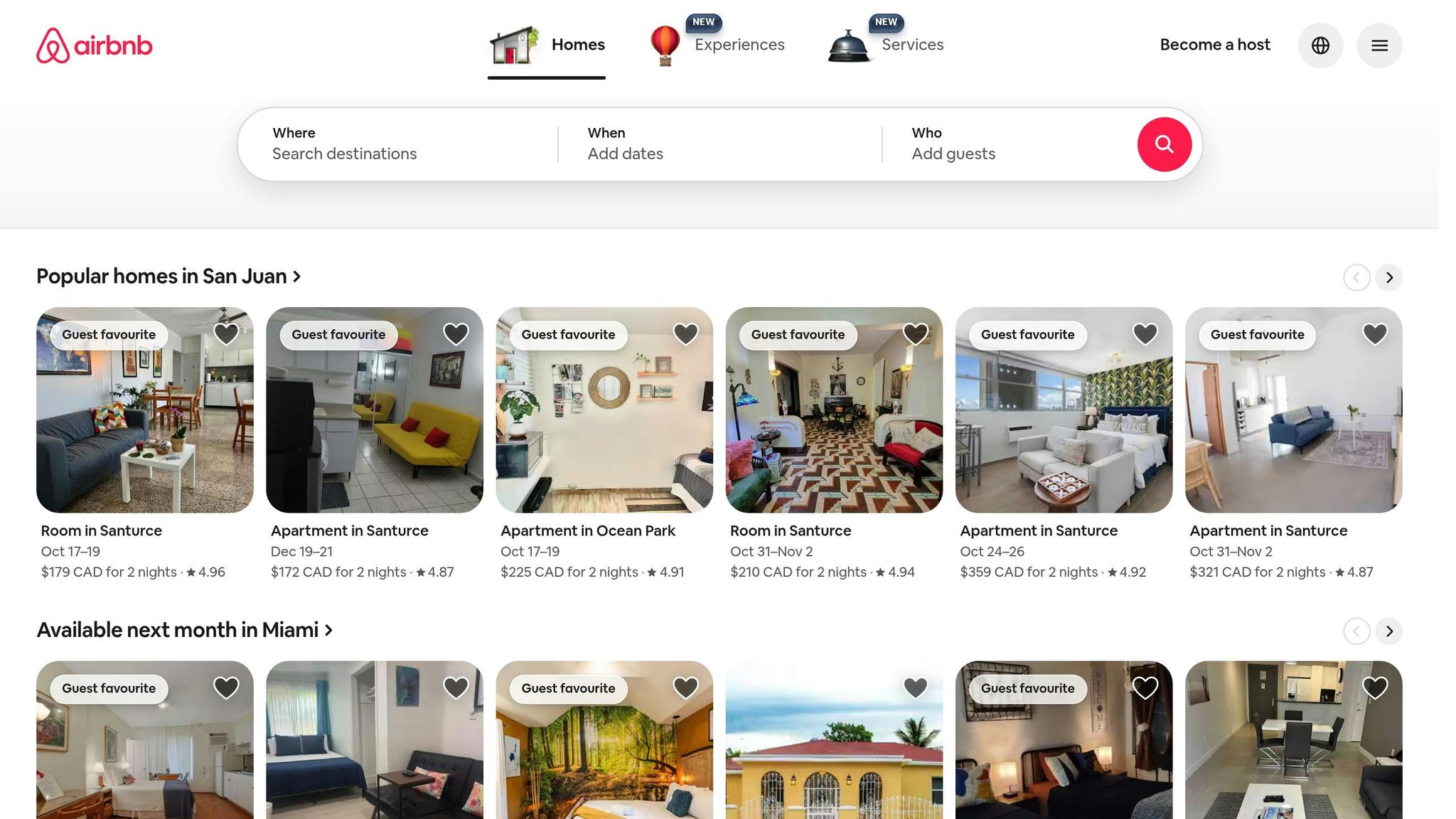Suburban short-term rentals (STRs) in Halifax are booming, especially in Fall River, Hammonds Plains, and Timberlea. Why? Families prefer these areas for their space, calm atmosphere, and access to urban amenities.
Here’s what you need to know:
- These suburbs are 30 minutes from downtown Halifax, offering large properties, outdoor spaces, and free parking - perfect for families.
- STR regulations in Halifax combine provincial and municipal rules. You’ll need a Tourist Accommodation Registration Number and must follow zoning, fire safety, and licensing requirements.
- Fall River is ideal for lakeside stays, Hammonds Plains offers privacy with modern amenities, and Timberlea features family-friendly community spaces.
To succeed, focus on compliance, family-oriented features, and year-round management. Services like Casa Scotia can help handle the details.
HRM Airbnb Bylaws

Short-Term Rental Regulations in Halifax Suburbs
Understanding short-term rental (STR) regulations in areas like Fall River, Hammonds Plains, and Timberlea requires a grasp of both provincial laws and Halifax Regional Municipality (HRM) bylaws. These rules combine Nova Scotia’s broader legislation with local zoning restrictions, making compliance a key priority for property owners. This framework ensures that property types and locations meet distinct requirements.
At the provincial level, properties intended for short-term stays must be registered before they can operate as STRs. Owners are required to obtain a Tourist Accommodation Registration Number, which must be displayed prominently. On top of this, HRM bylaws introduce additional rules for suburban areas. Properties in Fall River, Hammonds Plains, and Timberlea are typically classified under residential zoning, which comes with specific operating restrictions.
Fire safety is a non-negotiable factor. Properties must meet fire safety standards, including proper detection systems and clear exit plans. Municipal bylaws also regulate noise levels and parking, with penalties possible for repeated violations.
Residential vs. Commercial STRs
STRs fall into two main categories: residential and commercial. Residential STRs are either the owner’s primary residence or a secondary dwelling located on the same lot. Commercial STRs, on the other hand, are properties where the owner does not live on-site and are primarily used as short-term rentals. These commercial properties face stricter regulations.
For residential STRs, the requirements are generally less demanding, though compliance with fire safety and zoning rules is still necessary. Commercial STRs, however, often need additional permits, such as development permits and business licences. These properties may also require enhanced fire safety measures, professional liability insurance, and, in some cases, zoning variances or special use permits. These processes can involve lengthy applications and higher fees, reflecting the more complex nature of commercial STR operations.
Registration and Compliance Steps
The registration process for STRs involves two main stages: provincial registration and municipal licensing. Starting early is highly recommended to avoid delays that might disrupt your rental activities.
For provincial registration, you’ll need to visit Nova Scotia’s online portal and complete the Tourist Accommodation Registration application. This requires details about your property, contact information, and proof of insurance coverage tailored to STR activities. Processing times can vary, so it’s wise to plan ahead.
Once provincial registration is secured, the next step is municipal licensing through HRM. This application requires your provincial registration number, along with supporting documents like floor plans, parking arrangements, and emergency contact information. You’ll also need to ensure your property complies with local zoning regulations.
Fire safety compliance can be particularly involved. Residential properties must provide certifications for safety features, while commercial properties often require inspections by certified technicians. The costs for these inspections can vary depending on the size and complexity of the property.
Another critical step is securing STR-specific insurance, as standard homeowner policies usually don’t cover rental activities. You’ll need to explore specialized STR insurance or add policy endorsements, with costs depending on your property’s value and the coverage limits you choose.
Lastly, keep track of renewal deadlines for both registrations and licences to avoid penalties or interruptions to your rental operations. If managing these requirements feels overwhelming, professional services like Casa Scotia can handle the entire process, ensuring your property stays compliant with the latest regulations.
Creating Family-Friendly STR Properties
Once you've sorted out STR registration and compliance, it's time to focus on making your property a welcoming space for families.
Turning a suburban property into a family-friendly STR takes thoughtful preparation and smart marketing. Families look for accommodations that clearly address their needs and comply with local regulations. This strategy ties back to the advantages of suburban STRs mentioned earlier.
Make sure to include your provincial registration number, as required by Nova Scotia regulations [1], in your online listings. Also, emphasize nearby attractions that appeal to families, such as Peggy's Cove, Lawrencetown Beach, or Martinique Beach, to draw in potential guests [2].
Additionally, managing your property effectively is just as important as great marketing. Consider using professional services like Casa Scotia to highlight your property's family-friendly amenities and ensure it stands out to travellers seeking the perfect family getaway.
sbb-itb-b5e1074
Comparing STR Opportunities in 3 Suburbs
The suburbs around Halifax present a variety of short-term rental (STR) opportunities tailored to different investment strategies. Each area offers distinct advantages, making them worth a closer look.
Side-by-Side Comparison
Though all three suburbs operate within the Halifax Regional Municipality's regulations, their market characteristics set them apart:
| Factor | Fall River | Hammonds Plains | Timberlea |
|---|---|---|---|
| Distance to Halifax | Farther out but features direct lake access | Moderately close, offering a rural feel | Centrally located with easy urban access |
| Primary Appeal | Outdoor activities and lakeside living | Spacious properties with a peaceful atmosphere | Family-friendly amenities in established areas |
| Property Characteristics | Larger lots, often with waterfront options | Expansive properties offering privacy | Standard suburban lots in developed neighbourhoods |
| Family Attractions | Provincial parks and water-based activities | Scenic hiking trails and local parks | Community centres and popular walking trails |
| Seasonal Demand | High in summer for recreational stays | Steady throughout the year | Consistent year-round occupancy |
| Zoning Considerations | Mix of residential and recreational zoning | Primarily rural residential zoning | Suburban zoning in established areas |
Fall River is ideal for families drawn to outdoor adventures and lakeside activities. Hammonds Plains combines a rural atmosphere with convenience, attracting those seeking privacy and tranquillity. Meanwhile, Timberlea offers a central location with family-oriented amenities, ensuring steady demand throughout the year.
This comparison underscores how each area aligns with specific STR goals, paving the way for practical examples of success.
Case Study: Successful Suburban STR
A Timberlea property, once a family home, was transformed into a dedicated STR and achieved consistent year-round bookings. Key upgrades included child safety features, a welcoming outdoor play area, and marketing that highlighted its proximity to schools and community trails. With professional management from Casa Scotia, the property benefited from optimized pricing and full regulatory compliance.
This case illustrates how strategic upgrades and focused marketing can make suburban STRs highly appealing to families, even during seasonal shifts.
Year-Round STR Success Strategies
Keeping short-term rental (STR) properties booked throughout the year requires adjusting strategies to match seasonal demand. In suburban areas like Fall River, Hammonds Plains, and Timberlea, the ebb and flow of demand can vary widely by season. Property owners need to fine-tune their approach to suit these local patterns.
Seasonal Demand Patterns
Suburban STR markets are heavily influenced by the seasons. During slower periods, offering flexible rental terms or options for longer stays can help maintain occupancy. For instance, when vacation traffic slows down, catering to professionals or families looking for extended stays might be a smart move. To make these adjustments effectively, it’s important to study local market trends and adapt accordingly.
Navigating these seasonal shifts often requires a skilled hand, making professional management a valuable resource.
Professional Management Options
Managing an STR property comes with more than just seasonal challenges - there are also regulatory hurdles to clear. In Nova Scotia, all short-term rental properties must register annually with the Provincial Tourist Accommodation Registry and the Municipal Residential Rental Registry [3][1]. On top of that, Fall River’s classification as a Tier 2 community for commercial STR tax purposes [1] adds another layer of complexity.
This is where professional management services can make a big difference. For example, Casa Scotia provides tailored management plans, such as Year-Round Management and Peak-Season Management, designed to tackle these challenges head-on. Their services include everything from ensuring compliance with regulations to handling day-to-day tasks like property staging, professional cleaning, flexible booking policies, and maintenance coordination.
Ultimately, success in year-round STR management comes down to staying flexible and enlisting expert help to navigate both seasonal shifts and regulatory requirements.
Key Takeaways for Suburban STR Success
Achieving success with suburban short-term rentals (STRs) hinges on three key factors: staying compliant with regulations, offering family-oriented amenities, and maintaining effective year-round management.
First and foremost, staying on top of local regulations is non-negotiable. Understanding STR classifications and local rules ensures you remain legally and financially secure.
Once compliance is covered, focus on making your property a haven for families. Safety features like stair gates, outlet covers, and secure fencing create peace of mind for parents. Adding amenities such as cribs, high chairs, and kid-friendly entertainment can turn first-time visitors into loyal, repeat guests.
Seasonal shifts in demand require a flexible approach. During slower periods, consider catering to extended stays or business travellers to keep bookings steady.
Professional management services can be a game-changer. They handle everything from compliance and property staging to setting competitive, dynamic pricing, allowing you to concentrate on enhancing your property and strategy.
FAQs
What are the zoning rules for short-term rentals in Fall River, Hammonds Plains, and Timberlea?
As of 1 September 2023, new land-use by-laws clarify where short-term rentals (STRs) can operate in suburban areas:
- Residential zones: STRs are allowed only if they’re part of the host’s primary residence.
- Commercial and mixed-use zones: STRs are permitted in locations where tourist accommodations are already allowed.
These rules are designed to address community concerns while encouraging responsible short-term rental practices in the area.
What steps can property owners take to make their short-term rental appealing and family-friendly?
To attract families to your short-term rental, focus on creating a welcoming space that feels safe, comfortable, and practical for both parents and kids. Start by adding child-friendly amenities like cribs, high chairs, and baby gates. Safety is key, so include features like outlet covers, secure window locks, and non-slip mats to give parents peace of mind.
Location matters too. A property near family-friendly attractions, parks, schools, or grocery stores can be a big draw. Be sure to highlight these perks in your listing to catch the attention of potential guests. To make the stay even more enjoyable, consider thoughtful extras like board games, streaming services, or outdoor toys and play equipment that cater to all age groups.
By meeting the needs of families, you can make your rental stand out as a dependable and inviting choice for this important group of travellers.
What are the advantages of using Casa Scotia to manage suburban short-term rentals in areas like Fall River, Hammonds Plains, and Timberlea?
Partnering with Casa Scotia to manage your suburban short-term rental comes with several standout benefits. Their professional management ensures your property stays in line with local regulations, helping you steer clear of fines or legal hassles. Plus, Casa Scotia’s deep understanding of suburban markets means they can craft strategies that attract family-oriented travellers - an audience that's growing in areas like Fall River, Hammonds Plains, and Timberlea.
With Casa Scotia, you’ll also see improvements in guest satisfaction. They focus on keeping properties in top shape, offering family-friendly amenities, and providing prompt, reliable customer service. These efforts not only make for happier guests but also enhance your rental’s reputation and profitability over time.



